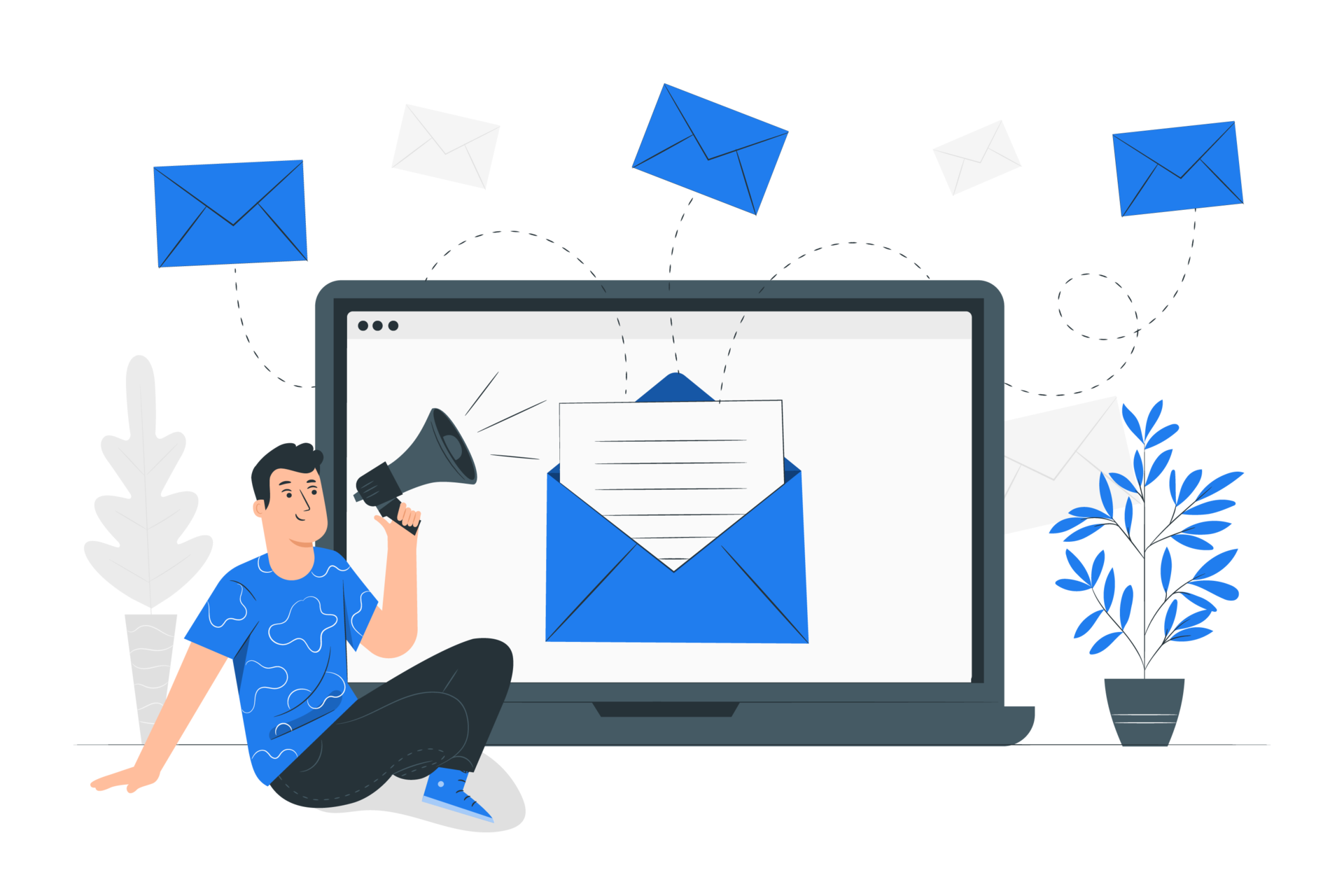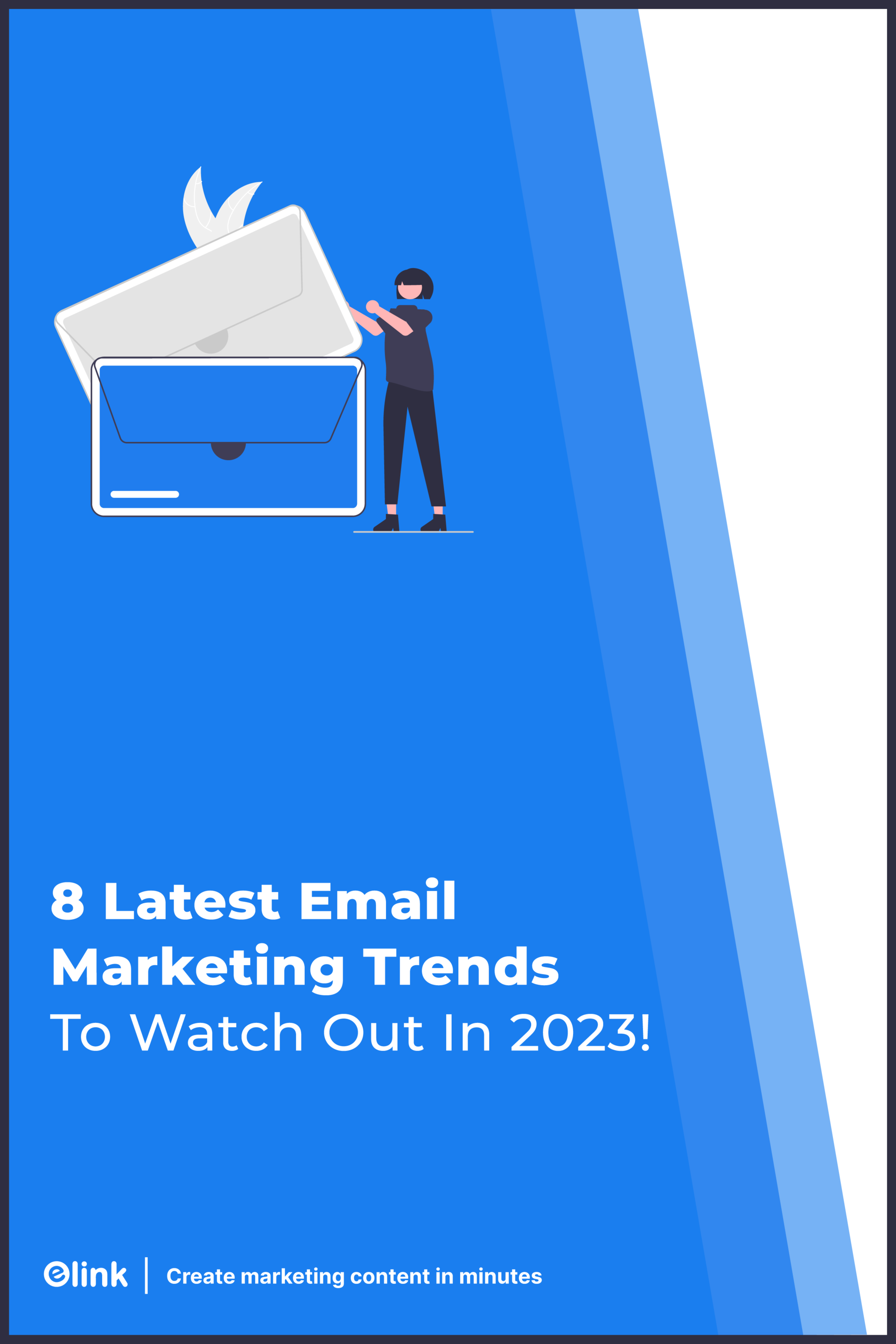Hey there, marketing maestros! Could we be any more excited about email marketing trends in 2023? Get ready to pivot your campaigns like Ross on a couch and make your audience go, “Oh. My. Marketing!”
These trends will have you Chandler-ing your way to engagement and Phoebe-ing your way into their hearts.
And guess what? Email campaigns bring an ROI that’s even bigger than Joey’s appetite! So grab your Central Perk coffee and get ready to slay those inboxes like a true Friend!
What is Email Marketing?
Email marketing is a compelling strategy used in digital marketing. It involves creating and sending messages to people’s email addresses. Email marketing aims to connect with customers, nurture potential leads, and get them to take action by personalizing the messages, sending them at the right time, and providing valuable content so businesses can build strong relationships with customers and ensure they remember the brand. Email marketing is cost-effective and reaches many people, which is why it’s still a really important tool for businesses to achieve their marketing goals and get real results.
Now that we’ve explored the basics of email marketing let’s delve into why it’s such an important aspect of digital marketing in our next section.
Why is Email Marketing Important?
Email marketing has emerged as a crucial component of digital marketing strategies for businesses of all sizes and industries. The reasons for its popularity are many. Here are the top five benefits of email marketing and why they make it a must-have for businesses:
- Cost-effective: One of the main benefits of email marketing is that it is more cost-effective than other marketing channels, making it an ideal option for businesses of all sizes. It doesn’t require a large budget to send an email to thousands of subscribers, and it can be easily tracked and measured for effectiveness.
- Personalization: Email marketing can be personalized based on customer preferences and behavior, increasing engagement and conversions. With the right data and tools, businesses can send targeted messages to their subscribers, making them feel valued and appreciated.
- Targeted Audience: Email marketing allows targeting specific audiences, making it more effective in driving conversions and revenue. Businesses can segment their email list based on demographics, behavior, and interests, ensuring their messages are relevant and valuable to the recipient.
- Measurable Results: Email marketing provides measurable results and ROI, making it easier for businesses to track their marketing efforts. They can monitor open, click-through, and conversion rates and make data-driven decisions to improve their campaigns.
- Brand Awareness and Trust Building: Email marketing can build brand awareness and customer trust, which is essential for long-term success. By consistently providing valuable content and offers, businesses can establish themselves as industry experts and earn the trust of their subscribers.
In a nutshell, email marketing is a game-changer for businesses. It allows you to have personal conversations and nurture leads like a helpful guide, all while being budget-friendly. The ability to measure results and engage customers on a deeper level makes it an essential tool in today’s digital landscape.
As we have explored the importance of email marketing, it’s natural to wonder whether it remains effective and relevant in the current landscape. To find out the answer to this question and gain insights into the state of email marketing in 2023, let’s dive into the next section!
Is Email Marketing Still Effective/Relevant in 2023?
Email marketing has changed significantly in recent years, adapting to evolving customer preferences, technological advancements, and shifting marketing landscapes. Despite this, it remains a highly effective and relevant way to connect with customers and drive conversions. In this response, we’ll explore the future of email marketing in 4 parts:
- Changes in email marketing practices over time: With the rise of social media and other marketing channels, email marketing has adapted to become more personalized, targeted, and automated. In the future, we can expect email marketing to evolve as technology advances and customer expectations change.
- Emphasis on customer experience: Email marketing will continue to emphasize customer experience strongly. Businesses must prioritize delivering personalized, relevant, and valuable content that resonates with their audience.
- Advancements in AI and ML: Advancements in AI and ML will enable personalized and relevant messaging at scale, helping businesses optimize their email campaigns, improving open and click-through rates, and ultimately driving conversions.
- Further integration with other marketing channels: Email marketing will continue to be integrated with other marketing channels to provide a seamless customer experience.
Email marketing will remain important to a successful marketing strategy in 2023 and beyond. By prioritizing customer experience, embracing new technology, and integrating with other marketing channels, businesses can continue to use email marketing to connect with their audience and drive results.
After learning about the future of email marketing, let’s head to the next section, where we’ll explore 8 email marketing trends for 2023 that will further enhance the effectiveness and relevance of email marketing in the years to come.
8 Email Marketing Trends for 2023
With new technologies and trends continuously reshaping how businesses engage with their customers, we can expect several email marketing trends to emerge, further enhancing the effectiveness and relevance of email marketing as a key component of integrated marketing strategies. In this response, we’ll explore 8 email marketing trends in 2023, including interactive emails, AI and ML, chatbots, video and GIFs, email automation, user-generated content, personalization at scale, and integration with other marketing channels.
1. Interactive Emails

Interactive emails contain interactive elements, such as clickable buttons, forms, menus, and surveys, that allow recipients to engage with the content directly from within their inboxes. They are designed to improve user experience by providing a more direct and seamless way to interact with email content without leaving the inbox.
These emails can help increase engagement and improve conversion rates by providing a more engaging experience for the recipient; they also can promote products and services, provide more personalized content, and encourage users to take specific actions, such as completing a survey or filling out a form.
Furthermore, interactive emails can provide valuable data to email marketers, such as user behavior and interaction data, which can help them refine and improve their email marketing strategies. With the help of interactive email tools and software, marketers can create more engaging and personalized campaigns, ultimately leading to higher ROI and better results.
2. Artificial Intelligence (AI) and Machine Learning (ML)
Artificial Intelligence (AI) and Machine Learning (ML) are two fields in computer science that are revolutionizing many aspects of technology and industry. AI involves the creation of intelligent machines that can perform tasks that typically require human intelligence, such as learning, reasoning, and problem-solving. In contrast, machine learning is a subset of AI that builds algorithms that can learn from data and improve over time without being explicitly programmed.
According to a report by Statista, the global AI market size is projected to reach $309.6 billion by 2026, growing at a CAGR of 39.7% from 2021 to 2026. This significant growth is driven by the increasing adoption of AI and ML across various industries, including healthcare, finance, retail, and transportation.
AI and ML are used to automate and streamline processes, enhance decision-making, and improve customer experience. Some common applications of AI and ML include chatbots, recommendation engines, fraud detection, and predictive analytics.
As AI and ML continue to evolve and become more accessible, their impact is expected to grow, with many experts predicting that they will become ubiquitous in the coming years.
3. Chatbots in Emails

Chatbots are artificial intelligence (AI) technology that can be integrated into emails to provide interactive communication between businesses and their customers. Chatbots use natural language processing (NLP) to understand and respond to customer inquiries and can provide personalized and immediate assistance without human intervention.
According to a report by Grand View Research, the global chatbot market size is expected to reach USD 10.08 billion by 2026, growing at a CAGR of 24.3% from 2021 to 2028. The growth of the chatbot market is driven by the increasing adoption of AI and the need for businesses to provide 24/7 customer service.
Chatbots in emails can benefit businesses, including improved customer satisfaction, reduced response time, and increased efficiency, and they can handle various customer inquiries, from simple questions to complex issues, freeing customer service representatives to focus on more complex cases.
Moreover, chatbots can also help businesses collect valuable data and insights about their customers, such as customer preferences and behaviors, which can be used to improve marketing and sales strategies.
4. Video and GIFs in Emails
Videos and GIFs in emails are a powerful way to engage subscribers and increase click-through rates. Including visual content in emails can help convey information more engagingly and memorably than text alone. And according to Campaign Monitor, emails with videos can increase click-through rates by up to 300%, which is beneficial for your campaign, right?
GIFs are a particularly popular type of visual content in emails, as they are short, easy to consume, and can convey emotions and reactions effectively; including GIFs in emails can also help to increase engagement and click-through rates.
The use of videos and GIFs in emails is becoming increasingly common as technology advances and multimedia content in marketing becomes more prevalent. However, it is important to ensure that the videos and GIFs used in emails are optimized for email clients and are not too large, as this can negatively impact email deliverability and load times.
5. Email Automation
Email automation is a marketing technique that allows businesses to send targeted, timely, and personalized messages to their subscribers using automation software. With email automation, businesses can create a series of pre-written emails triggered by specific user actions, such as signing up for a newsletter or abandoning a shopping cart. This helps create a more personalized and relevant experience for the subscriber while reducing the workload for the business.
According to Campaign Monitor, automated emails receive a 119% higher click-through rate than regular email campaigns. Additionally, email automation can help businesses save time and increase efficiency, as they can create and schedule emails in advance, freeing up time for other tasks.
Email automation is particularly useful for lead nurturing, as it allows businesses to send relevant content to subscribers at different stages of the buyer journey. For example, a business may send an introductory email to a new subscriber, followed by a series of educational emails that help to build trust and establish authority in their industry.
6. User-Generated Content

User-generated content (UGC) refers to any form of content, such as reviews, testimonials, images, videos, or social media posts, created by users or customers rather than the brand itself. UGC has become increasingly popular in recent years as consumers place more trust in the opinions and experiences of their peers than in traditional advertising.
Incorporating UGC into email marketing campaigns can be a highly effective way to increase engagement and build customer trust.
There are many ways to incorporate UGC into email marketing campaigns, such as featuring customer reviews, showcasing user-generated images or videos, or including social media posts from customers. By including UGC in emails, businesses can demonstrate the value and quality of their products or services while showing that they care about their customers’ experiences and opinions.
7. Personalization at Scale
Personalization at scale refers to using technology and data to deliver personalized content and experiences to many customers or subscribers. Personalization has become increasingly important in marketing as customers expect more relevant and personalized experiences from the brands they interact with.
With personalization at scale, businesses can use automation software to collect and analyze customer data, such as browsing and purchase history, demographics, and behavior, to deliver tailored content and experiences to each customer. This can include personalized product recommendations, customized email campaigns, and targeted advertising.
Personalization at scale can help businesses improve customer engagement, increase conversion rates, and build stronger customer relationships.
However, personalization at scale also requires careful planning and execution to avoid intrusive or creepy. Using data and technology ethically and transparently is important to allow customers to opt out of personalized experiences.
8. Integration with other Marketing Channels
Integration with other marketing channels refers to aligning and coordinating marketing efforts across multiple channels, such as email, social media, advertising, and content marketing. By integrating different channels, businesses can create a more cohesive and consistent customer experience while increasing the reach and effectiveness of their marketing efforts.
For example, businesses can use email marketing to drive traffic to their social media channels and use social media to promote their email campaigns. They can also use data from different channels to inform their marketing strategies and improve the targeting and personalization of their campaigns.
Integrating email marketing with other channels can help businesses to reach a wider audience and improve the effectiveness of their campaigns.
By embracing these trends, businesses can create more engaging, targeted, and effective email marketing campaigns, connecting with their customers in new and meaningful ways.
Stay Up-to-Date with the Latest Email Marketing Trends and Strategies with Elink
Looking to stay ahead of the game in the exciting world of email marketing? Well, look no further than Elink’s blog!
Our expert marketers and email gurus work tirelessly to bring you the latest and greatest in email marketing trends and strategies. We’re passionate about helping businesses of all sizes succeed with their email marketing efforts, and our blog is one of the many ways we do just that.
When you subscribe to our blog, you’ll get access to valuable insights, tips, and tricks on email marketing. We cover everything from designing eye-catching emails to building a robust email list and even how to automate your email marketing campaigns.
But we don’t just stop at the basics. Our blog also dives into advanced email marketing techniques, like personalization at scale, interactive emails, and chatbots in emails. We believe that staying ahead of the curve is essential in a rapidly evolving digital landscape, and we want to help you do just that.
Plus, we sprinkle in a healthy dose of humor and fun to make learning about email marketing an enjoyable experience. Who said learning had to be boring, right?
And the best part? It’s free and easily accessible with just a click of a button. So what are you waiting for? Subscribe to Elink’s blog today and join the email marketing revolution!
Conclusion
Email marketing remains essential to any business’s marketing strategy in 2023 and beyond. It provides a cost-effective way to reach and engage with a targeted audience, build customer relationships, and drive conversions. Statistics and data support the effectiveness of email marketing, and its evolution over time has made it even more valuable in today’s marketing landscape.
Looking towards the future, email marketing will continue to emphasize customer experience strongly, with advancements in AI and ML enabling personalized and relevant messaging at scale. Email automation, user-generated content, and personalization at scale will also play a significant role in successful email campaigns. The integration of email marketing with other marketing channels will continue to provide a seamless customer experience and increase the overall effectiveness of marketing efforts.
As a business, staying up-to-date with the latest email marketing trends and best practices is crucial to maintaining a competitive edge. Elink’s blog is valuable for staying updated on email marketing trends and strategies. By implementing the latest trends and best practices, businesses can create more engaging, targeted, and effective email marketing campaigns, connecting with their customers in new and meaningful ways.
In summary, email marketing is here to stay and will continue to evolve and adapt to the changing marketing landscape. Businesses can create successful email marketing campaigns that drive conversions and build lasting customer relationships by prioritizing customer experience, leveraging technological advancements, and staying up-to-date with the latest trends and best practices.
Further Reads:
Viral Marketing: Definition, Benefits, Techniques & Tools!
How to Build an Email List for Engaging Subscribers?
Email Marketing Renaissance: 23 Trending Terms for Success in 2023
Boost Your Sales with a Winning Email Marketing Funnel!
Email Etiquette: 17 Important Rules To Write A Professional Email!
Customer Onboarding Emails:What Are They & How To Create Them?






